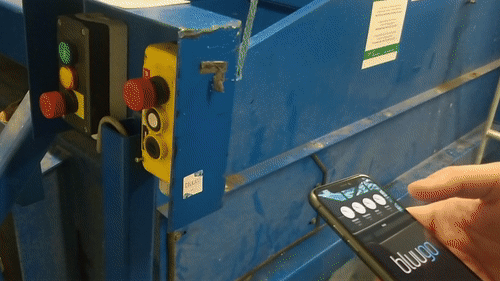70% of maintenance transformations fail
Companies in the maintenance & field service industry are investing in business digitalization at an increasing pace. This is no wonder since new technologies and intelligent solutions offer great potential to solve many typical problems of the industry, and customers are also starting to demand more digitalized services.
Still, a majority of all digitalization endeavors in maintenance & field services fail in one way or another. According to an article by McKinsey, “almost 70 percent of maintenance transformations fail to deliver the desired outcome”.
In another article, McKinsey surveyed a group of maintenance managers about their digital tools and fewer than 20 percent felt that their maintainers have a positive user experience.
Based on these findings, it is easy to determine that digitalization as such is not a shortcut to happiness. In order to achieve the desired results, it has to be done systematically and with the right tools.
Check out the full articles by McKinsey here:
“The future of maintenance for distributed fixed assets”
“Digitally enabled reliability: Beyond predictive maintenance”
“Digitalization by Default” is the wrong approach
Even though many companies that offer maintenance & field services are ultimately failing in their digitalization efforts, it seems that in theory, they are doing all the right things. How is this possible?
The answer is simple: unsystematic execution.
There is an almost limitless number of things you can do regarding business digitalization in maintenance & field services – digitalizing work management, collecting sensor data, automating technician dispatching, using mobile devices for field data entries, implementing GPS & Geofencing for automated hour reporting, building Machine Learning models to predict failures, etc. The list is a long one.
Unfortunately, many companies are just diving headfirst into this sea of opportunities and trying to do everything at once – digitalizing by default. Instead of focusing on new technologies and trying to use every possible tool available, companies should focus on creating a comprehensive digitalization strategy that derives from clear business goals.
The critical step for most organizations is the shift to a proactive, comprehensive and well-thought-out approach to their digital maintenance and reliability strategy.
-McKinsey
Good end-user experience is the foundation for success
In order to succeed, the digital transformation of maintenance & field services has to begin from the grassroot level – from technicians, maintainers, and other field personnel who use the digital tools in their day-to-day activities.
If the end-users don’t clearly understand the purpose and value of a new solution, tool, or workflow, it can quickly manifest into strong resistance. A new solution can quickly become “yet another tool” that feels more like a nuisance than aid, and that nobody really wants to use.
The same effect can also be caused by poor usability – e.g. overly complex workflows, unfamiliar terminology, slowness, bugs, inadequate offline functionality, etc. The end-user tools should be simple, easy-to-use, and intuitive. Technicians must be able to focus on their core tasks instead of reading user manuals for new software. Comprehensive onboarding plays a big role here.
Another pivotal aspect is modifiability – the tools should be easily modifiable to match your existing processes without custom development or grassroot-level coding. The solutions should adapt to your business, not the other way around.

Including all stakeholder groups in the development is crucial
The best way to ensure all stakeholder groups are truly committed to your maintenance & field service transformation projects is to include members from each group right from the beginning. This also includes external stakeholder groups such as your customers, which are too often forgotten in the development phase of a new solution.
Different stakeholder groups have different perspectives and challenges – it is very important to design your tools and workflows to match the actual needs of each group. When done correctly, this results in high-level usability, low employee resistance, and a good customer experience. This way, the tools can also be tested early on, allowing agile adjustments based on actual user feedback before the full rollout of a solution.
Should you buy something off-the-shelf or develop a custom solution?
Choosing the right IT tools is a pivotal decision in every digitalization project. There are two main roads to choose from when planning to implement a new solution. They both have their pros and cons.
Option 1: Buy a ready-to-run solution
Ready-to-run solutions are faster to implement but offer poor modifiability. They are designed to do things in a specific predefined manner and do not offer much room for customization. With a ready-to-run solution, you will never stand out from your competitors and gain real competitive advantage – it is highly likely they have exactly the same tools in use. These solutions usually do not support including external stakeholders – they are mainly designed for internal processes.
Option 2: Build a custom solution yourself or with a partner
Developing a solution from scratch on top of your ERP system or with tools like Microsoft Azure allows you to customize it exactly the way you want – it should fit your business perfectly. The problem with this approach is that it requires a lot of expertise, time, and money. The risk is high, and the payback time for your investment is very long. It is not uncommon that the original business innovations get buried beneath the massive IT project and the desired results are never achieved.
Read more in our blog “Focusing on ERP systems in business digitalization can ruin a company”.
The third option
Don’t like either of the two options? Neither do we.
The third option is to choose Bluugo’s Tracking Cloud® - a cloud-based SaaS solution for digitalizing maintenance & field service processes and connecting all stakeholder groups in a game-changing way. Our unique product combines the easiness and speed of a ready-to-run product with the flexibility & adjustability of a custom-developed solution.
Our flexible pay-as-you-go pricing model ensures you only pay for what you need. You can activate the features you need and leave everything unnecessary out of your service.
Interested?
Contact our sales to book a free product demo or read more here:
Tracking Cloud™ Solution Page: Digitalized Maintenance & Field Services
Reference case: Europress – Intelligent Maintenance & Field Services
Blog: Cost-efficient Maintenance & Field Services with Intelligent Solutions
Blog: Intelligent Solutions for Maintenance & Field Services


